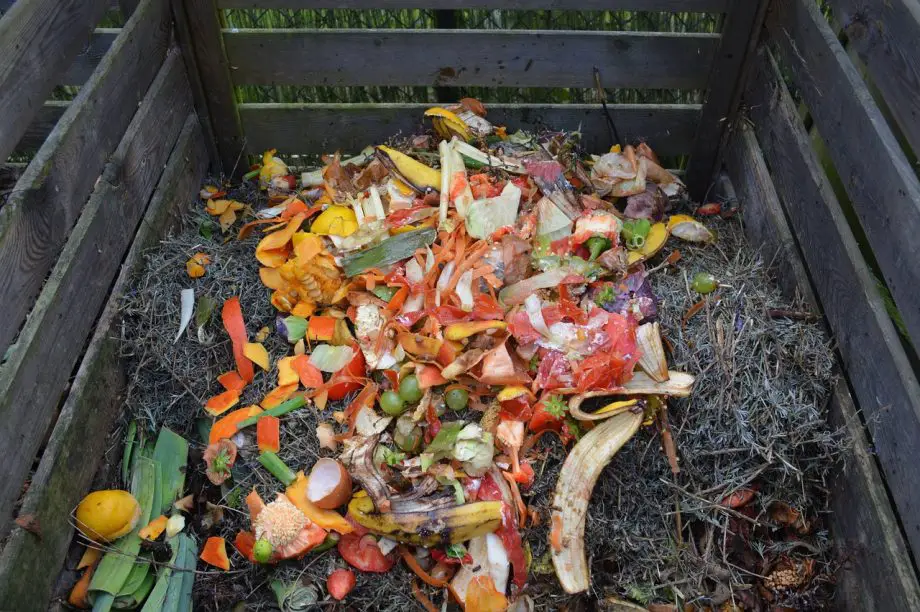
Discover practical ways on ‘How to Reduce Carbon Footprint at Home’. Make a difference with easy steps for energy efficiency, a sustainable diet, and more. Join us!
Ever wondered how you can play a part in saving our planet right from your living room?
Well, it’s simpler than you might think! Our guide on ‘How to Reduce Carbon Footprint at Home’ is here to help.
We’ll walk you through easy, everyday changes that can significantly lower your environmental impact.
So, get ready to transform your home into a beacon of sustainability and make a real difference for our Earth!
How to Reduce Carbon Footprint at Home
Are you ready to make your home a champion of sustainability?
In our guide on ‘How to Reduce Carbon Footprint at Home’, we’ll explore a variety of topics that can help you do just that.
From energy efficiency and sustainable transportation to mindful eating and waste management, we’ve got you covered.
We’ll even delve into the world of renewable energy and answer some frequently asked questions.
So, let’s embark on this journey together and discover how your home can contribute to a healthier planet!
Definition of Carbon Footprint
Let’s start with the basics. What exactly is a carbon footprint?
In simple terms, a carbon footprint is the total amount of greenhouse gases, primarily carbon dioxide, that are emitted directly or indirectly by an individual, organization, event, or product.
It’s like a measure of the impact our actions have on the environment, particularly in terms of climate change.
Sustainable living describes a lifestyle that attempts to reduce the use of Earth’s natural resources by an individual or society. Its practitioners often attempt to reduce their ecological footprint (including their carbon footprint) by altering their home designs and methods of transportation, energy consumption and diet.https://en.wikipedia.org/wiki/Sustainable_living
Importance of Reducing Carbon Footprint
Now, you might be wondering, why is it important to reduce our carbon footprint.
Well, the higher our carbon footprint, the greater our contribution to global warming and climate change.
By reducing our carbon footprint and lowering energy use we can help slow down the rate of global warming, protect ecosystems, and ensure a healthier and more sustainable future for ourselves and generations to come.
Understanding Your Carbon Footprint
Understanding your carbon footprint means recognizing the various activities in your daily life that contribute to greenhouse gas emissions.
This could be anything from the car you drive, the food you eat, the products you buy, to the energy you use at home.
It’s about being aware of how your lifestyle choices impact the environment.
Explanation of How Daily Activities Contribute to Carbon Footprint
Everyday activities contribute to our carbon footprint in many ways.
For instance, driving a car releases carbon dioxide into the atmosphere.
The food we eat also has a carbon footprint and it takes energy to grow, process, and transport food.
And if that energy comes from fossil fuels, it results in carbon emissions.
Even the electricity we use at home contributes to our carbon footprint, especially if it’s generated from non-renewable sources like coal or natural gas.
Importance of Awareness in Reducing Carbon Footprint
Awareness is the first step towards reducing our carbon footprint.
Once we understand how our actions contribute to greenhouse gas emissions, we can start making more environmentally friendly choices.
This could mean opting for public transportation instead of driving, choosing locally-sourced food, or switching to renewable energy sources at home.
Every small change can make a big difference in reducing our carbon footprint and helping our planet.
Energy Efficiency at Home
Let’s turn our attention to our homes, and our personal spaces, and see how we can make them more energy-efficient.
It’s not just about saving on electricity bills, though that’s a nice bonus!
It’s about making conscious choices that reduce our carbon footprint and contribute to a healthier planet.
From the appliances we use to how we control our home’s temperature, there are numerous ways we can improve energy efficiency.
So, let’s dive in and explore how your home can become a shining example of energy efficiency!
Importance of Energy Efficiency in Reducing Carbon Footprint
Energy efficiency is a key player in the fight against climate change. Why, you ask?
Well, most of the energy we use in our homes comes from burning fossil fuels, which release carbon dioxide into the atmosphere.
By making our homes more energy-efficient, we can significantly reduce these emissions.
Plus, it’s a win-win situation so not only do we help the environment, but we also save on our energy bills!
Tips for Energy Efficiency:
Now that we understand the importance, let’s look at some practical ways to improve energy efficiency at home.
Use of Energy-Efficient Appliances
One of the easiest ways to increase energy efficiency is by using energy-efficient appliances.
Look for appliances with the ENERGY STAR label as these are designed to use less energy without compromising on performance.
Whether it’s your refrigerator, washing machine, or air conditioner, there’s an energy-efficient option out there.
Proper Insulation
Proper insulation is another crucial aspect of energy efficiency. It helps maintain a comfortable temperature in your home, reducing the need for heating or cooling.
This means less energy consumption and, therefore, lower carbon emissions.
So, consider insulating your walls, roof, and floors, and don’t forget to seal those windows and doors to prevent drafts!
Use of LED Bulbs
Lighting is another area where you can make a big difference. Traditional incandescent bulbs consume a lot of energy and need to be replaced often.
On the other hand, LED bulbs use about 75% less energy and last 25 times longer.
They might cost a bit more upfront, but they’ll save you money in the long run.
Unplugging Appliances When Not in Use
Finally, remember to unplug your electronic devices and appliances when they’re not in use.
Many appliances continue to draw power even when they’re turned off, in what’s known as ‘standby power’.
By unplugging your appliances, or using a power strip and turning it off when you’re not using them, you can save energy and reduce your carbon footprint.
Consider Using A Heat Pump
Heat pumps are another excellent way to reduce your carbon footprint at home.
These devices work by transferring heat from one place to another, rather than generating heat directly like a furnace.
This makes them incredibly energy-efficient, especially when compared to traditional heating systems.
In the colder months, heat pumps can extract heat from the outside air (even when it’s quite cold!) and move it inside to warm your home.
In the warmer months, they work in reverse, removing heat from your home and transferring it outside, acting like an air conditioner.
By using a heat pump, you can significantly reduce the amount of energy you use for heating and cooling, which can lead to a substantial reduction in your carbon footprint.
Plus, as more and more electricity is generated from renewable sources, the carbon footprint of running a heat pump can decrease even further.
So, if you’re looking for a way to make your home more energy-efficient and reduce your carbon emissions, a heat pump could be a great option.
Sustainable Transportation
Next on our journey to a greener lifestyle, let’s talk about getting around.
Transportation plays a significant role in our carbon footprint, especially if we’re relying on cars for our daily commute.
But don’t worry, there are plenty of sustainable alternatives that can help us reduce our impact.
From carpooling and public transit to cycling and walking, there are many ways we can get where we need to go without leaving a heavy carbon footprint.
So, buckle up, and let’s explore the world of sustainable transportation!
Impact of Transportation on Carbon Footprint
Transportation is one of the major contributors to global carbon emissions.
Every time we hop in our cars and drive, we’re burning fossil fuels and releasing carbon dioxide into the atmosphere.
In fact, according to the U.S. Environmental Protection Agency, transportation accounts for nearly 30% of all U.S. greenhouse gas emissions. That’s a significant impact!
Tips for Sustainable Transportation:
So, how can we make our transportation habits more sustainable? Let’s explore some options.
Carpooling
Carpooling is a great way to reduce the number of cars on the road, which in turn reduces carbon emissions.
Plus, it’s a fantastic way to save on fuel costs and make new friends! So, whether it’s for your daily commute or a weekend trip, consider sharing the ride.
Use of Public Transportation
Public transportation is another excellent way to reduce your carbon footprint.
Buses, trams, and trains can carry many people at once, making them far more efficient than individual cars.
Plus, using public transportation can often be a great way to relax, catch up on some reading, or get some extra steps in!
Cycling or Walking for Short Distances
For short distances, consider leaving the car at home and walking or cycling instead.
Not only is it good for the environment, but it’s also great for your health!
Plus, you might find that you enjoy the fresh air and the chance to connect with your surroundings.
So, next time you need to run a quick errand, why not grab your bike or put on your walking shoes?
Using An Electric Vehicle
Adding to the discussion on transportation’s impact on our carbon footprint, let’s not forget about electric vehicles (EVs).
EVs are a game-changer in the world of sustainable transportation.
Unlike traditional cars that run on gasoline or diesel, electric vehicles are powered by electricity, a lot of which can come from renewable sources.
This means they produce zero tailpipe emissions, significantly reducing your carbon footprint.
Plus, as more renewable energy enters the grid, the carbon footprint of driving an electric car can decrease even further.
So, if you’re considering a new car, an electric vehicle could be a great way to reduce your carbon emissions and drive towards a greener future.
Sustainable Diet
Did you know that what’s on your plate can also impact the planet?
That’s right, our food choices play a significant role in our carbon footprint.
But don’t worry, adopting a sustainable diet doesn’t mean you have to compromise on taste or nutrition.
From eating locally sourced produce to reducing food waste, there are many ways to enjoy delicious meals while also caring for our Earth.
So, let’s dig in and discover how we can nourish ourselves and the planet through a sustainable diet!
Impact of Food Choices on Carbon Footprint
Our food choices have a significant impact on our carbon footprint.
From the energy it takes to grow and harvest food, to the transportation needed to bring it to our local grocery store, every step in the food chain contributes to greenhouse gas emissions.
In fact, according to the Food and Agriculture Organization of the United Nations, the global food system is responsible for nearly a third of all human-caused greenhouse gas emissions.
Tips for a Sustainable Diet:
So, how can we make our diets more sustainable? Here are some tips.
Eating Local and Seasonal Produce
One of the best ways to reduce the carbon footprint of your diet is to eat local and seasonal produce.
This reduces the distance your food has to travel to reach your plate, which in turn reduces carbon emissions from transportation.
Plus, local and seasonal produce is often fresher and tastier!
Reducing Meat Consumption
Meat, particularly red meat, has a high carbon footprint due to the resources required to raise livestock and the methane emissions they produce.
You don’t have to go completely vegetarian or vegan (unless you want to!), but even reducing your meat consumption can make a big difference.
Try incorporating more plant-based meals into your diet, or have a meat-free day once a week.
Reducing Food Waste
Finally, reducing food waste is another important aspect of a sustainable diet.
When we waste food, we’re not just wasting the food itself, but also all the energy and resources that went into producing it.
So, try to buy only what you need, use leftovers creatively, and compost food scraps if possible. Every little bit helps!
Waste Management
Let’s talk trash! But in a good way. Waste management is a crucial part of reducing our carbon footprint.
Every item we throw away has a lifecycle of carbon emissions – from production to disposal.
But with a few smart strategies, we can minimize our waste and make a positive impact on our planet.
From recycling to composting, let’s dive into the world of waste management and discover how handling our trash responsibly can help us tread lightly on our Earth!
Impact of Waste on Carbon Footprint
Waste has a significant impact on our carbon footprint. Every product we use and throw away has a carbon cost, from the energy used in its production to the emissions generated by its disposal.
In fact, landfills are a major source of methane, a potent greenhouse gas.
By managing our waste effectively, we can reduce these emissions and lessen our impact on the environment.
Tips for Waste Management:
So, how can we manage our waste more effectively? Here are some strategies.
Recycling
Recycling is one of the most well-known ways to manage waste.
By recycling items like paper, plastic, glass, and metal, we can reduce the need for new materials, saving energy and reducing carbon emissions.
Remember to rinse out your recyclables and check your local recycling guidelines to make sure you’re recycling correctly!
Composting
Composting is another great way to manage waste. Organic waste like fruit and vegetable peels, coffee grounds, and yard waste can be composted at home, turning waste into nutrient-rich soil for your garden.
Plus, composting reduces the amount of waste going to landfills, reducing methane emissions.
Reducing Consumption
Finally, one of the most effective ways to reduce waste is simply to consume less.
This means thinking carefully about what we buy and choosing products with less packaging, buying second-hand, and repairing items instead of replacing them.
By reducing our consumption, we can significantly reduce the amount of waste we produce and our carbon footprint.
Water Conservation
Water is life, as they say, but did you know that how we use water can also impact our carbon footprint? It’s true!
From the energy it takes to treat and pump water to the emissions from heating it, our water usage plays a role in our environmental impact.
But don’t worry, conserving water doesn’t mean you have to give up your creature comforts.
With a few simple small changes, we can save water and reduce our carbon footprint.
So, let’s dive in and explore the world of water conservation!
Impact of Water Usage on Carbon Footprint
Water might seem unrelated to carbon emissions, but the connection is more significant than you might think.
The process of treating, heating, and distributing water uses a considerable amount of energy, which often comes from burning fossil fuels.
This means that every time we turn on the tap, we’re indirectly contributing to carbon emissions.
Tips for Water Conservation:
So, how can we use water more efficiently? Here are some tips.
Using Low-Flow Showerheads
One of the easiest ways to conserve water is by installing low-flow showerheads.
These devices use significantly less water than traditional showerheads, without compromising your shower experience.
Plus, less water means less energy needed to heat the water, reducing your carbon footprint even further.
Fixing Leaks Promptly
Did you know that a dripping faucet can waste over 3,000 gallons of water per year? That’s the equivalent of over 180 showers!
Fixing leaks promptly is a simple yet effective way to conserve water and reduce your carbon footprint.
Using Water-Efficient Appliances
Finally, consider using water-efficient appliances. Look for appliances with the ENERGY STAR label, which uses less water and energy.
This could include washing machines, dishwashers, and even toilets.
By choosing water-efficient appliances, you can save water, reduce your energy usage, and lower your carbon footprint.
Switch to Demand Water Heaters
On-demand water heaters, also known as tankless water heaters, are another fantastic way to reduce your carbon footprint.
Unlike traditional water heaters, which keep a large tank of water heated at all times, on-demand water heaters heat water only as it’s needed.
This can significantly reduce the amount of energy used, leading to lower carbon emissions.
When you turn on the hot water tap, cold water travels through a pipe into the unit, where it’s heated by an electric element or gas burner.
This means you’re not wasting energy to heat water you’re not using, and you’ll never run out of hot water!
While on-demand water heaters can have a higher upfront cost than traditional water heaters, they can be more cost-effective in the long run due to their energy efficiency.
They also tend to last longer than traditional water heaters, making them a good investment for those looking to reduce their carbon footprint and save money on their energy bills.
Investing in Renewable Energy
Ready to take your sustainability efforts to the next level? Let’s talk about renewable energy.
Investing in renewable energy is one of the most impactful ways to reduce your carbon footprint.
It’s about harnessing the power of nature, from the sun and wind to water and geothermal heat, to create electricity.
And the best part? Unlike fossil fuels, these energy sources won’t run out.
So, let’s explore how investing in renewable energy can help us create a sustainable future for our planet!
Importance of Renewable Energy in Reducing Carbon Footprint
Renewable energy is a game-changer when it comes to reducing our carbon footprint.
Unlike fossil fuels, which release carbon dioxide when burned, renewable energy sources like wind, solar, and hydro produce little to no greenhouse gasses.
This means that by using renewable energy, we can significantly reduce our carbon emissions and help combat climate change.
Tips for Investing in Renewable Energy:
So, how can we start using more renewable energy? Here are a couple of tips.
Installing Solar Panels
One of the most effective ways to use renewable energy is by installing solar panels in your home.
Solar panels convert the sun’s energy into electricity, which you can use to power your home.
While the upfront cost can be significant, solar panels can save you money in the long run by reducing your electricity bills.
Plus, in some areas, you can even sell excess electricity back to the grid!
Using Green Energy Providers
If installing solar panels isn’t an option for you, consider switching to a green energy provider.
These companies generate electricity from renewable sources and supply it to the grid.
By choosing a green energy provider, you can ensure that the electricity you use is coming from renewable sources, reducing your carbon footprint.
Plus, it’s a change that can often be made with just a few clicks or a phone call!
FAQs
Still got questions? Don’t worry, we’ve got you covered! In this section, we’ll tackle some of the most frequently asked questions about reducing your carbon footprint at home.
From quick tips to deeper insights, we’re here to help you navigate your journey to a more sustainable lifestyle.
So, let’s dive into these FAQs and clear up any lingering queries you might have!
Q: What are 10 ways to reduce your carbon footprint?
A:
• Use energy-efficient appliances: Look for appliances with the ENERGY STAR label.
• Insulate your home: Proper insulation can reduce the need for heating and cooling.
• Use LED bulbs: They use less energy and last longer than traditional bulbs.
• Unplug appliances when not in use: Many appliances draw power even when they’re turned off.
• Carpool or use public transportation: Fewer cars on the road mean less carbon emissions.
• Eat local and seasonal produce: This reduces the carbon emissions from transporting food.
• Reduce meat consumption: The production of meat has a high carbon footprint.
• Recycle and compost: This reduces the amount of waste going to landfills.
Fix leaks promptly: A dripping faucet can waste a lot of water over time.
• Invest in renewable energy: Consider installing solar panels or switching to a green energy provider.
Q: What are 3 things to reduce carbon footprint?
A:
• Use Public Transportation: Using buses, trams, or trains instead of individual cars can significantly reduce your carbon footprint.
• Eat a Plant-Based Diet: Shifting towards a plant-based diet can drastically reduce the carbon emissions associated with food production.
• Conserve Water: Simple steps like fixing leaks promptly and using water-efficient appliances can help conserve water and reduce your carbon footprint.
Q: What are 5 ways humans can reduce their carbon footprint?
A:
• Energy Efficiency: Improve energy efficiency in your home by using energy-efficient appliances and LED bulbs.
• Sustainable Transportation: Opt for carpooling, public transportation, or cycling instead of driving.
• Sustainable Diet: Eat locally sourced, seasonal produce and reduce meat consumption.
• Waste Management: Recycle, compost, and reduce consumption to minimize waste.
• Water Conservation: Use low-flow showerheads, fix leaks promptly, and use water-efficient appliances.
How To Reduce Carbon Footprint At Home Conclusion
As we wrap up our journey through the world of sustainability, it’s time to reflect on what we’ve learned and look ahead to the changes we can make.
Reducing our carbon footprint at home might seem like a daunting task, but as we’ve seen, it’s all about taking small, manageable steps.
From energy efficiency to waste management, every little bit counts. So, let’s take these insights and turn them into action. After all, our planet is worth it!
Recap of the Importance and Benefits of Reducing Carbon Footprint
We’ve covered a lot of ground, haven’t we? We’ve learned that reducing our carbon footprint is not just crucial for the environment, but it also comes with a host of other benefits.
From saving money on energy bills to contributing to a healthier planet for future generations, every step we take towards a more sustainable lifestyle makes a difference.
Remember, our daily choices, from the food we eat to the way we commute, all add up to our overall carbon footprint.
Encouragement for Readers to Take Action
Now, it’s over to you! We’ve armed you with knowledge, tips, and strategies, and now it’s time to put them into action.
Start small, perhaps by switching to LED bulbs or recycling more.
Then, as you get comfortable, you can take on bigger changes like investing in renewable energy.
Remember, every action counts, and together, we can make a significant impact.
So, let’s get started and make our homes a beacon of sustainability!
Read more: Sustainable Living Tips For Beginners







